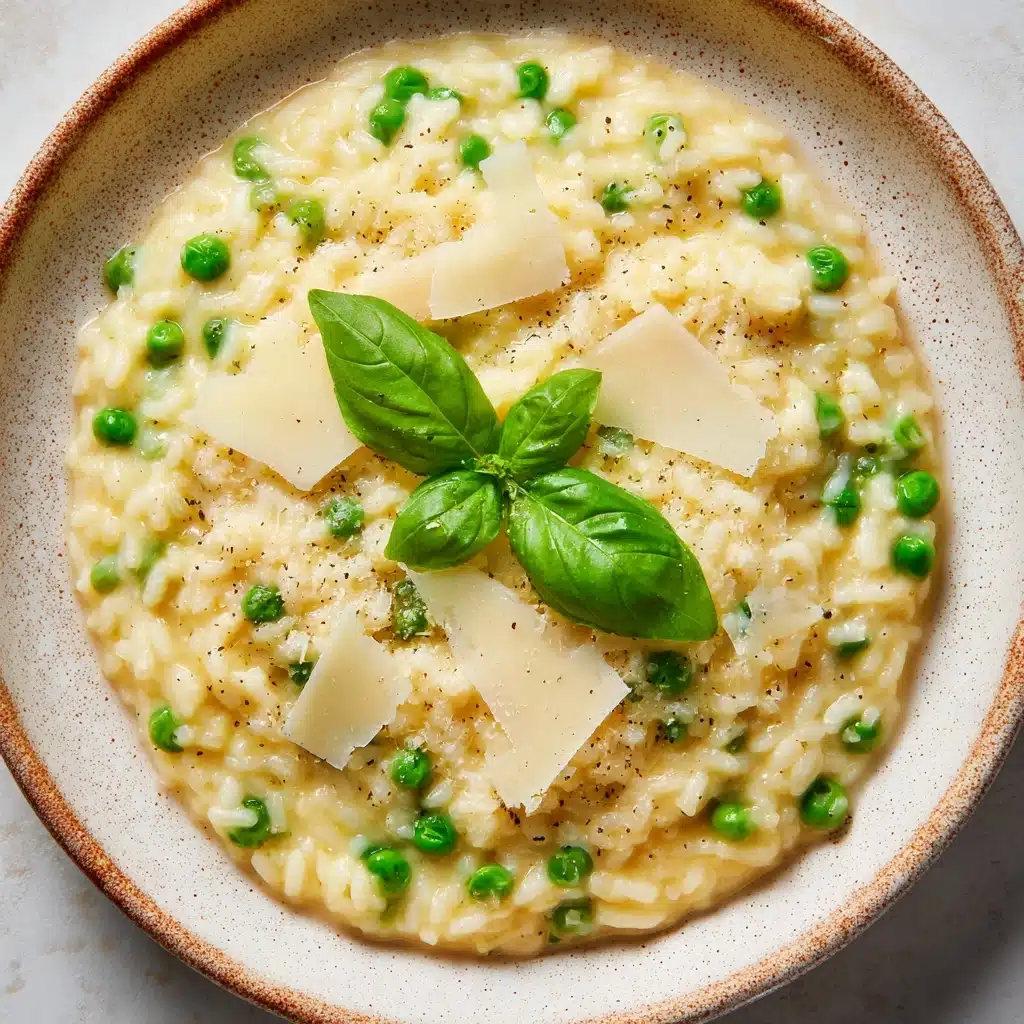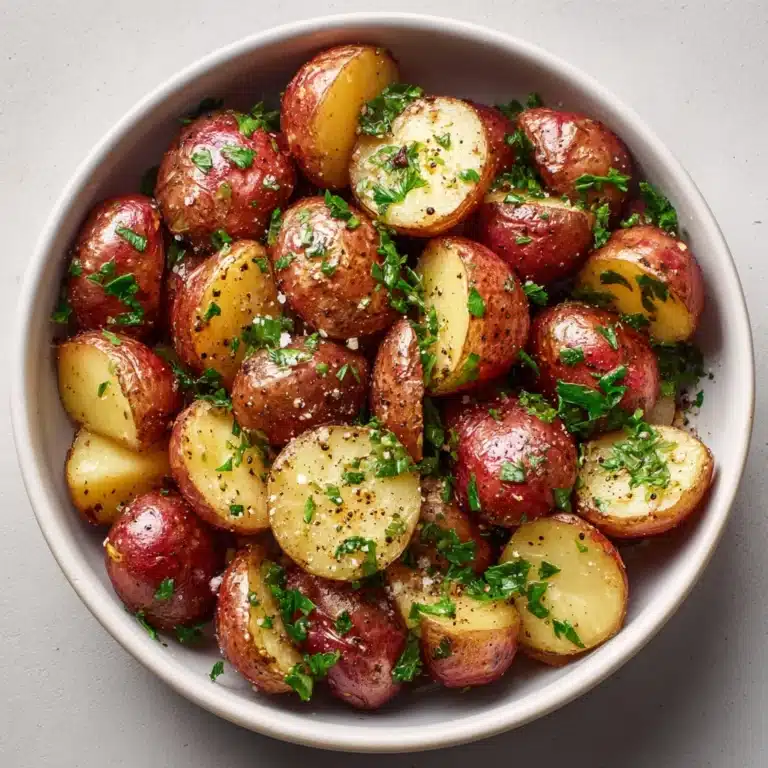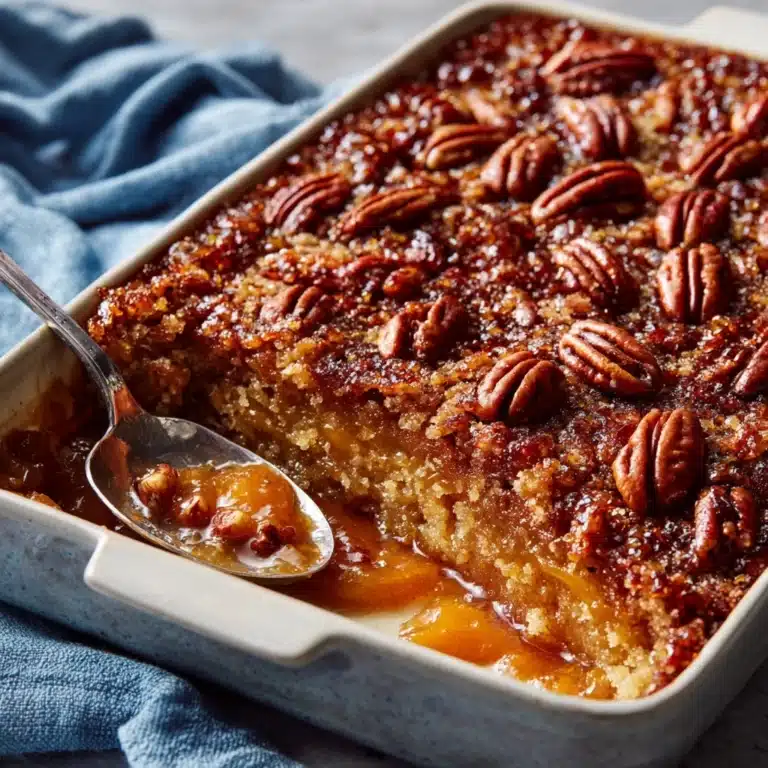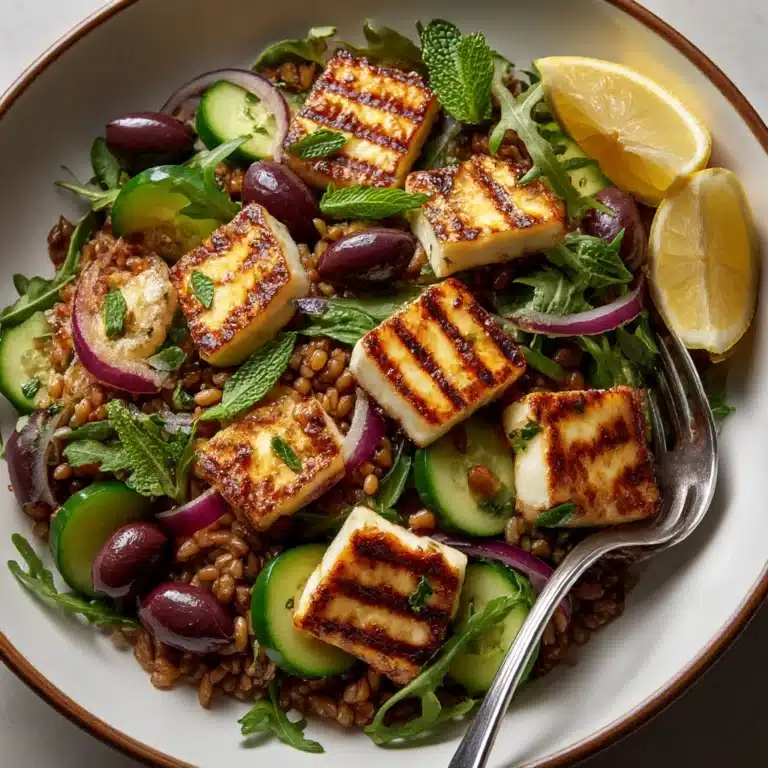Fresh Pea Risotto Recipe
If you crave a creamy, soul-satisfying dish that celebrates the very best of spring, look no further than Fresh Pea Risotto. This vibrant Italian classic is a personal favorite, combining tender arborio rice with bursts of sweet peas, a hint of Parmesan, and soft herbal notes from optional fresh herbs. Every spoonful is a testament to how luxurious simple ingredients can taste with just a little patience and love.

Ingredients You’ll Need
The brilliance of Fresh Pea Risotto lies in its handful of basic but essential ingredients. Each part plays a starring role, contributing unique flavor, texture, or color for a dish that’s truly greater than the sum of its parts. Here’s what you’ll need—and why it matters:
- Arborio rice: The short, starchy grains give risotto its trademark creaminess; don’t substitute with long-grain rice if you want authentic results.
- Olive oil: Adds a grassy, peppery depth as the base for sautéing aromatics.
- Finely chopped onion: Lends a mellow sweetness and layers every bite with flavor.
- Minced garlic: Brings subtle pungency that enhances, but never overpowers, the bright peas.
- Vegetable broth (warmed): Each ladleful infuses the rice with gentle, savory notes as it cooks.
- Fresh peas, blanched: The star ingredient, adding bursts of sweetness and gorgeous color—blanching keeps them tender yet vibrant.
- Dry white wine: Brightens and balances the richness, ensuring every bite feels fresh and nuanced.
- Grated Parmesan cheese: Melts in at the end for luscious texture and unmistakable nutty flavor.
- Unsalted butter: Finishes the risotto with silky smoothness.
- Salt and freshly ground black pepper: Essential for awakening every flavor—taste and adjust at the end.
- Fresh parsley or mint for garnish (optional): Offers a pop of color and fresh, herbal highlights that complement the peas beautifully.
How to Make Fresh Pea Risotto
Step 1: Prepare Your Aromatics
Start by setting a wide saucepan over medium heat and swirl in the olive oil. Add the finely chopped onion, gently cooking it until it turns soft and translucent—be patient, as this slow sauté builds the foundation of rich flavor you want in your Fresh Pea Risotto. Stir in the minced garlic and let it sizzle for another minute, just until fragrant.
Step 2: Toast the Rice
Now it’s time for the arborio rice to shine. Pour it into the pan and stir continuously for 1 to 2 minutes, letting the grains become slightly translucent at the edges with a subtle, nutty aroma. This crucial step coats the rice in oil and ensures each grain will cook evenly, drawing in maximum flavor and creaminess.
Step 3: Deglaze with Wine
Pour in the dry white wine while the pan is still hot, scraping up any bits stuck to the bottom. Stir gently until the wine is nearly absorbed—this rapid infusion gives Fresh Pea Risotto a lovely brightness, and you’ll notice the aroma subtly shift, hinting at what’s to come.
Step 4: Gradually Add Broth
With the rice gently simmering, add your warm vegetable broth a ladleful at a time. Let the rice absorb most of the liquid before adding the next scoop, stirring frequently. This slow addition—over about 18 to 20 minutes—is what transforms simple rice into velvety, creamy risotto. Taste a grain towards the end; it should be tender but with a touch of bite left in the center.
Step 5: Stir in the Peas, Cheese, and Butter
As the rice reaches its creamy peak, gently fold in the blanched peas, allowing them to warm through without losing their color. Off the heat, stir in grated Parmesan and unsalted butter. Season your Fresh Pea Risotto with salt and plenty of freshly cracked pepper. The result: a glossy, irresistible pot, inviting you to tuck in immediately.
How to Serve Fresh Pea Risotto

Garnishes
A handful of fresh herbs—think chopped parsley or ribbons of mint—on top of your Fresh Pea Risotto will add striking green color and a refreshing hint that pairs beautifully with sweet peas. If you’re feeling extra decadent, finish with a little more grated Parmesan or even a drizzle of good olive oil for gloss and richness.
Side Dishes
This risotto is so delightfully creamy and filling that it really shines as a main course, but you can balance things out with a simple arugula salad tossed with lemon or a plate of grilled asparagus. Some warm, crusty bread alongside is perfect for scooping up every last bit of creamy rice.
Creative Ways to Present
Serve Fresh Pea Risotto in shallow bowls for classic comfort, or get a little playful by portioning it into small glasses for an elegant starter at a spring dinner party. A spoonful atop seared scallops creates a gorgeous, restaurant-worthy main, while a swirl of pea puree (from blending some of the peas) makes each serving extra vibrant and gourmet.
Make Ahead and Storage
Storing Leftovers
Leftover Fresh Pea Risotto keeps pretty well for 2 to 3 days in an airtight container in the fridge. The rice continues to absorb liquid, so expect it to thicken up—a splash of broth or water when reheating will bring that creamy texture right back.
Freezing
Risotto is best enjoyed fresh, but you can freeze portions for up to one month if needed. Let it cool completely, scoop into freezer-safe containers, and cover tightly. Thaw overnight in the fridge before reheating and stirring well to bring back the creamy consistency.
Reheating
Gently reheat Fresh Pea Risotto in a saucepan over low heat, adding a bit of broth, water, or even a splash of cream to loosen it up. Stir frequently to keep the cheese and butter from separating; avoid high heat or the rice can become sticky.
FAQs
Can I use frozen peas instead of fresh?
Absolutely! Frozen peas work beautifully in Fresh Pea Risotto. Just thaw them and gently fold them in as you would with fresh; you’ll still get plenty of sweet flavor and vibrant color.
What’s the secret to creamy risotto?
The magic is in slowly adding warm broth, one ladle at a time, and their steady stirring—this encourages the rice’s natural starch to develop that signature silkiness. Don’t be tempted to rush this step!
Can I make Fresh Pea Risotto vegan?
Yes, Fresh Pea Risotto can be made vegan by swapping out the butter for a plant-based version and using nutritional yeast in place of Parmesan cheese. You’ll still get plenty of satisfying, creamy goodness.
What kind of white wine should I use?
Choose a dry, crisp white wine you’d enjoy drinking—a Pinot Grigio or Sauvignon Blanc is perfect. Avoid sweet or oaky wines, which can overpower the delicate flavor of the peas.
Why is my risotto too thick after storing?
Risotto naturally absorbs extra liquid as it sits, turning quite thick or even solid. To revive leftover Fresh Pea Risotto, simply reheat gently with a splash of broth or water, stirring until the creamy consistency returns.
Final Thoughts
It’s hard not to fall in love with this Fresh Pea Risotto—from the cheerful color to the creamy texture and sweet-fresh flavor, it’s a dish that practically begs to be shared. I hope you give it a try and let it become a favorite at your table, too!
Print
Fresh Pea Risotto Recipe
- Total Time: 35 minutes
- Yield: 4 servings 1x
- Diet: Vegetarian
Description
Indulge in the creamy goodness of this Fresh Pea Risotto, a classic Italian dish bursting with the flavors of spring. This recipe combines the richness of Arborio rice with the freshness of blanched peas, Parmesan cheese, and a hint of white wine. Perfect for a cozy dinner or a special gathering.
Ingredients
For the Risotto:
- 1 cup arborio rice
- 1 tablespoon olive oil
- 1 small onion, finely chopped
- 2 cloves garlic, minced
- 4 cups vegetable broth (kept warm)
- 1 cup fresh peas (blanched)
- 1/2 cup dry white wine
- 1/2 cup grated Parmesan cheese
- 2 tablespoons unsalted butter
- Salt and freshly ground black pepper to taste
For Garnish:
- Fresh parsley or mint for garnish (optional)
Instructions
- Saute Aromatics: In a large saucepan, heat olive oil over medium heat. Add the onion and cook until softened, about 3 minutes. Stir in the garlic and cook for another 1 minute.
- Toast Rice: Add the arborio rice and stir for 1–2 minutes until the grains are lightly toasted. Pour in the white wine and stir until absorbed.
- Cook Risotto: Add the warm vegetable broth one ladle at a time, stirring frequently until absorbed. Continue for about 18–20 minutes until the rice is creamy yet slightly firm.
- Finish: Stir in peas, Parmesan, and butter. Season with salt and pepper. Serve hot, garnished with parsley or mint.
Notes
- For a deeper pea flavor and color, blend half the peas into a puree and mix with cheese and butter.
- If fresh peas are unavailable, use thawed frozen peas.
- Prep Time: 10 minutes
- Cook Time: 25 minutes
- Category: Main Course
- Method: Stovetop
- Cuisine: Italian
Nutrition
- Serving Size: 1 cup
- Calories: 320
- Sugar: 4g
- Sodium: 520mg
- Fat: 12g
- Saturated Fat: 5g
- Unsaturated Fat: 5g
- Trans Fat: 0g
- Carbohydrates: 44g
- Fiber: 3g
- Protein: 10g
- Cholesterol: 20mg






